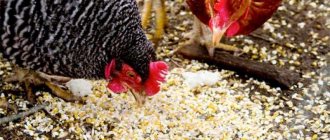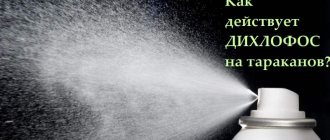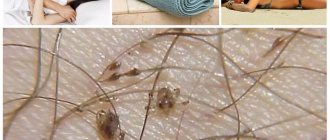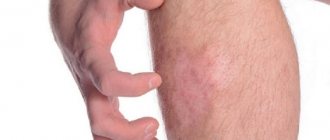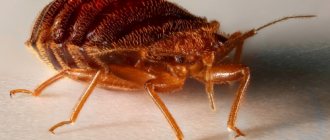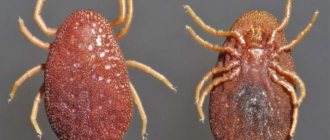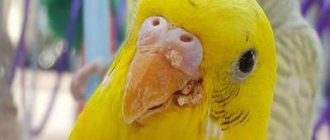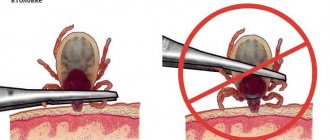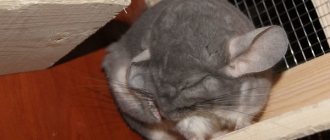Content
- Types of food poisoning
- Signs and symptoms in children
- Causes of food poisoning in children
- What should you do if you are poisoned?
- Peculiarities of child nutrition after treatment
- Disease prevention
Food poisoning is a complex of painful symptoms that occur when the body is affected by poisonous and low-quality products of animal or plant origin. Toxins can enter in different ways: through the intestines, absorption through the mucous membrane of the nasopharynx, or inhalation. In children under one year of age, absorption and distribution throughout the body occurs faster. Source: H.D. Abdikhakimovich Features of the course of foodborne toxic infections // Pediatrician, 2022, v. 8, special issue
Poisoning in children is more common than in adults, and its course is much more complicated. This is explained by the peculiarity of the child’s still fragile body. In the early years, the intestinal microflora is not yet formed, toxins are quickly absorbed and spread through the blood, and low acidity of gastric juice is noted.
How to treat poisoning in chickens
Features of treatment are determined by the cause of intoxication of birds. For example, when poisoned by chemicals, animals are given antidotes that normalize the body's functioning. Veterinarians also recommend giving animals mycotoxin adsorbents. They neutralize poisons of natural and synthetic origin and help restore the functioning of the digestive system.
Types of food poisoning
- Microbial. This type includes poisoning from spoiled or contaminated products.
- Intoxication with chemicals. It occurs when toxins enter the gastrointestinal tract and requires urgent medical attention.
- Poisoning with poisonous mushrooms, fish or meat, plants. An urgent visit to a doctor is recommended. Source: B.Zh. Suleizhan, W.K. Keldikulova Foodborne toxic infections // Journal of the Almaty State Institute for Advanced Training of Doctors, 2011, No. 1
Signs and symptoms in children
Food poisoning in children occurs suddenly and manifests itself in an acute or mild form. The first signs are observed several hours after the child has consumed spoiled or poor quality food. Often this happens within 60 minutes, with a latent course of the disease – up to 8 days. The faster the symptoms of poisoning appear, the more dangerous it is.
Regardless of the pathogen, stomach poisoning in children may result in:
- cutting pain in the abdomen;
- general weakness and lethargy;
- the presence of nausea and/or vomiting;
- chills;
- dry mucous membranes;
- pale skin;
- increased or decreased temperature;
- loss of appetite;
- increased thirst;
- rapid breathing and pulse;
- loose stool.
The greatest danger to a baby's health is vomiting and loose stools , since they can quickly dehydrate the body and can cause kidney failure. The main signs of dehydration include: a decrease in the frequency of urination and a decrease in the amount of urine, dry skin and a decrease in its elasticity.
In difficult cases, botulism may occur with damage to the nervous system. With such poisoning, the baby experiences dry mouth, constipation, and visual acuity may decrease.
If a child is poisoned by plants, he is most often bothered by severe abdominal pain with profuse drooling. There may be changes in heart rate and rhythm disturbances.
Mushroom poisoning is characterized by painful sensations in the abdomen, pallor of the lips and skin, and upset stool. The child may experience nausea and frequent vomiting, sometimes with blood. Poisoning with poisonous mushrooms is the most dangerous type of poisoning.
Eating vegetable dishes and foods high in nitrates can cause a number of symptoms in a child. These include pain in the stomach, lethargy, headache, shortness of breath, gagging and tinnitus.
Symptoms of poisoning that require prompt medical attention:
- low body temperature;
- dyspnea;
- drowsiness;
- dark colored urine and a decrease in its quantity;
- blood in vomit or stool.
Poisons are not a toy for adults
Admit it, each of us sometimes wanted to “die so that everyone would cry.” One of the most common ways to prove something to someone, take revenge and make them nervous is an attempt at poisoning. Alas, sad statistics show that dying from poison is not so easy. A much more likely prospect is to continue living on disability and regretting “what a fool I was.” So I warned you. And now I’ll tell you what to do with those who didn’t listen.
Juliet with no-shpa
One morning I was replacing a colleague. We stood in the smoking room, sharing the latest news.
“What, how did it go?” I asked, passively inhaling the aroma of nicotine tar. “It was a lousy shift,” a fellow resuscitator exhaled a portion of smoke sadly. - What's wrong? “I didn’t sleep half the night, they brought a knife to my stomach.” After the operation, while blood and plasma were infused, treatment was prescribed, it was already three nights. Lie down. Half an hour of rest and the call again - the receiver calls,” here he grinned slyly, “they brought a girl and a guy, she’s in snot and tears, the second one is pale, shaking. - What, love wasn’t shared? “Yeah, stupid,” she swallowed the pills. Blood pressure is normal, conscious... - Why come to us? “So I ask the short-lived people: “Why come to us?” Those: “well, like some kind of order, the young girl will suddenly die”...
They took me to the intensive care unit, I asked: “What did you swallow?”, she rubbed away her tears, sat pale: “I-I took five tablets of no-shpa and five charcoal.” "Yo Mama!" - I burst out. They were scared. Guy: “What, doctor, is everything so serious?” I told him: “It’s a complete mess! I don’t know how this could end!” The lady turned paler than ever and began to tremble. Guy: “Doctor, please save my girlfriend! It's my fault! Help!”...
It’s funny now, but then I was as angry as a dog: I pulled my gloves up to my elbows, found the thickest gastric tube, put on an apron, and screwed the tube into her as hard as possible. They managed to substitute a basin in time, the thin girl folded in half and vomited. The probe fell into the basin... I took out this dirty hose, all the liquid was draining from it. She told me with tears in her eyes: “A-are you going to shove this at me again?” “But of course!” – I grinned, wiped it with a rag and again forced the rubber snake to swallow.
- Well, you give it! – I laughed. - Well, what? There’s no point in playing suicide at night,” he grinned, putting out his cigarette.
"Weapons of Cowards and Women"
Since time immemorial, people have used plant extracts, the mucus of poisonous frogs, and chemical compounds to kill their enemies. Women dropped belladonna into their eyes “for the beauty of the eyes.” Men of the New World used curare poison to kill animals. Kings and courtiers poisoned each other with plant poisons. Opium was the drug of choice in the Middle East.
There have always been poisons. Some were transformed into medicines, others remained poisons. Time passes, but life turns out to be not so changeable, and we encounter poisons everywhere (acids, alkalis, cleaning products, varnishes, paints and much more).
As a resuscitator, this topic, on the one hand, is close to me, but on the other hand, it remains the dark side of the profession. Close - because the drugs we use are overwhelmingly potent and poisonous, and any mistake can cost the life of our patient.
The problem is that knowledge is sometimes powerless, especially when a patient admitted in a comatose state is not able to explain the cause of his condition. And it is not always possible to find out the type of poison “by eye”.
Although some symptoms scream about themselves. Let’s say there is an overdose of opiates: the patient breathes every once in a while, the mucous membranes are cyanotic, and most importantly, the pupils are narrow and pinpointed. Those poisoned by carbon monoxide are always pink, from altered hemoglobin, unable to carry oxygen. Fortunately, if relatives bring packages of medications, they will report inhalation of toxic fumes. But all this is rare.
In the vast majority of cases, we work by touch. Of course, we take tests of gastric contents, blood, urine, but when will these tests be ready? A week later! And even later. And the patient must be saved now!
Often the poison, like the Moor, has done its job and left, triggering a set of reactions leading to multiple organ failure. And we are not “Doctor Houses”; we do not have the opportunity or time to crawl through apartments and examine the contents of cellars. Therefore, I’m not going to fill your heads with secret antidotes, I’ll just tell you about the basics of detoxification.
In general, now I’ll tell you in detail what to do when someone accidentally or not very well, in everyday life, swallowed or sniffed, or spilled some nasty stuff on themselves. About what you can do at home without harming the health of the victim.
While the ambulance is on the way
Poisoning with acids and alkalis.
I combined them as cauterizing poisons. Yes, alkalis cause liquefaction necrosis, and acids cause coagulation necrosis, causing more superficial tissue damage. But let the professionals understand these subtleties.
It is important for you: if this is a skin lesion, you need to rinse the affected surfaces with a stream of plain clean water and consult a doctor. If you take poison internally, drink water. Not soda, not acid, but ordinary water!
Under no circumstances should soda be used for acetic acid poisoning, although in chemistry lessons we conducted experiments on neutralizing acids with alkalis. And all because all reactions proceed with the release of a large amount of heat.
Do not induce vomiting, as burns can spread to the respiratory tract and vomiting can injure the mucous membranes and cause bleeding. You can drink Almagel, or Novocaine. But be sure to call an ambulance as soon as possible!
I don’t know what motivates suicidal people when they drink vinegar essence, but the fact that they are dooming themselves to torment is one hundred percent. And it is far from certain that death will occur. But the fact is that there will be wild pains that cannot be controlled by drugs, there will be a narrowing of the esophagus, there will be bougienage, there will be feeding through a hole in the stomach if the expansion of the esophagus does not help. Very often, cancer grows at the site of the altered esophagus...
In general, I repeat, to save the sufferer, use just water and no chemicals.
A small lyrical digression.
The further science goes, the easier it is to treat. Back at the beginning of this century, when liquid starches appeared, we literally prayed for them. The head of the department took this miracle drug out of the safe, and we fell on our faces. They pulled a match to see who would get this life-giving moisture today, who would come out of the coma today. And then the whole crowd walked and contemplated how the moisture sparkling in the morning dawn poured in drop by drop. Drip-drip-drip... We stood and watched and... nothing happened.
Moreover, as it turned out, this starch preparation is not without side effects and we are now using it strictly according to indications. Resistance to antibacterial drugs of the latest generations is still developing. All cerebroprotectors turned out to be ineffective. But the water... the water remained. Salty, sweet, it became the basis of our resuscitation care.
So don't make things up! Treat with water! And we, with our clinical and pharmacological knowledge, will... also treat with water, and something else.
Poisoning with pills.
Here, as much as possible, you need to find out what you took, when you took it, the total dose, in order to inform the doctor as accurately as possible. If you see a victim, he feels bad, there are tubes of pills nearby - call an ambulance!
If the patient is conscious
, simply trigger the gag reflex by irritating the back wall of the throat. Let him drink water - and he will vomit again. Gastric lavage is one of the main methods of detoxification. Even if a lot of time has passed and the poison has been absorbed, by washing the stomach, removing gastric contents along with the released toxin, even in such a household way, you will reduce the total concentration of the drug in the body. After gastric lavage, you can force him to take banal charcoal tablets.
If a person loses consciousness
, then, on the contrary, do not induce vomiting under any circumstances! In this state, protective reflexes are impaired, and all this nasty stuff can fly into the lung, aggravating the situation. In this case, we, resuscitators, first insert a tube into the trachea, protect the airways, and only then rinse the stomach with water.
Methyl alcohol, ethylene glycol or brake fluid
. It's more difficult with them. The fact is that they, in fact, are not poisonous, but as a result of the so-called “lethal synthesis”, thanks to the enzyme - alcohol dehydrogenase, toxic substances are formed. Formaldehyde and formic acid are formed from methanol. They are extremely toxic, 100 ml is considered lethal! The central nervous system and retina of the eye are affected, causing blindness.
Ethylene glycol breaks down to glycolaldehyde, glyoxal and oxaloacetic acid. These substances primarily affect the brain and kidneys.
Why did I dwell on metabolism in such detail? Yes, because for these poisonings you can prescribe an antidote. This antidote is ethyl alcohol, drinking alcohol or just good vodka. It is high-quality alcohol that will competitively bind to alcohol dehydrogenase and prevent lethal metabolism. Make him drink a glass of vodka before the ambulance arrives. Of course, if the patient is conscious.
If the victim is in a coma, that is, you cannot wake him up, he does not open his eyes, and is not available for contact - under no circumstances induce vomiting! Don't force him to drink anything. Just turn on your side, thereby making breathing easier and preventing vomit from entering the trachea.
Carbon monoxide poisoning
. And in general any gases. Be sure to pull the victim away from the source of poisoning and give him the opportunity to breathe fresh air. And be sure to call an ambulance!
Opiate poisoning
. I have already mentioned these substances. Symptoms: the patient does not breathe or breathes shallowly, the mucous membranes are bluish. Take a breath for him. It's simple: tilt your head back, open your mouth slightly, put on a scarf, pinch your nose, take a deep breath and exhale into the victim. You should see how the chest rises and he passively exhales and inhales again.
Call an ambulance! Emergency doctors have an antidote - naloxone, and there are means for artificial ventilation of the lungs. Until the ambulance arrives, you will have to breathe for him on your own. You can try to stir him up, rub his ears - he’s not waking up, he’s not breathing? Keep breathing yourself.
And once again I ask - do not invent a bicycle, do not remember the school chemistry course! Let the professionals handle the antidotes. "DO NO HARM!" – should be your and our motto.
Appreciate life, it is beautiful! Time smooths out a lot and changes a lot. Don't do things that you or your family will regret... Be healthy!
Vladimir Shpinev
Photo thinkstockphotos.com
Causes of illness in a child
One of the main causes of food poisoning is the consumption of stale food . To avoid illness, you should pay attention to the appearance and smell of food, as well as storage conditions. Often, parents buy food for their child without paying attention to the expiration date. Even if you make purchases at a trusted retail outlet with an impeccable reputation, you must always look at the packaging of the product.
In addition to low-quality products, in medical practice there are cases of chemical poisons and toxic plants entering the baby’s body along with food. Toxins may be contained in medications or household chemicals that the child used accidentally or unknowingly.
Active substances of drugs and their effect on rats
Both brodifacoum and bromadiolone are anticoagulant rodenticides. When they enter the rat's liver, they interfere with the formation of vitamin K, which is responsible for blood clotting. A lethal dose of an anticoagulant leads to the development of extensive hemorrhages in the internal organs and death of animals 3-4 days after eating the poisoned bait.
Such a “delayed” effect of the poison is very important from a practical point of view: rodents do not feel the toxic effect for a long time after eating the drug once, and therefore boldly use it again and again, and also lead to the poisoning of their fellow tribesmen. At the same time, anticoagulants are not excreted in the urine, they gradually accumulate in the animals’ bodies and kill them when a lethal dose is reached.
However, brodifacoum and bromadiolone can kill a rodent even after a single use of the drug, if the animal eats a sufficient portion of it. This is the main difference between the active components of Rat Death and the first generation anticoagulants. However, even if a significant amount of poison is consumed, the death of the animal will not occur immediately, but with some delay.
Review
“We placed Rat Death all over the kitchen in the corners and closed the doors at night so that the cat wouldn’t find it. In the morning, two tablets were gnawed, we collected everything, and the next night we laid it out again. And the next morning they found a mouse in the middle of the kitchen. She was still alive, but she hardly moved, she twitched a couple of times when her husband touched her, but she could not escape. Generally abnormal behavior, it seems to me, because I thought that the animal would die in its nest, and the death must be some kind of terrible, with agony. But it doesn’t matter, the mouse died, and new ones no longer appeared, that is, the method worked ... "
Marina, Odessa
The amounts of active ingredients in Rat Death poisons No. 1 and No. 2 are selected so that rodents do not feel their taste and are not wary when eating them. Thus, the proportion of brodifacoum in the drug is 0.005%. Additionally, the products contain aromas and flavoring additives (including vegetable oil), which mask the residual taste of the poison and attract rats and mice.
It is also useful to read: Using ultrasound against rats and mice
Lethal doses of brodifacoum and bromadiolone, as well as lethal quantities of the drugs themselves for rodents, are given in the table:
| Substance/Device | Lethal dose, black and gray rats, for 1 animal | Lethal dose, house mice, for 1 animal |
| Brodifacoum | 0.1 mg | 0.012 mg |
| Bromadiolone | 0.3 mg | 0.03 mg |
| Rat Death 1 | 2 g | 0.24 g |
| Rat Death 2 | 6 g | 0.6 g |
On average, an adult rat eats about 50 grams of food per day, and a mouse eats about 5 grams. That is, if a hungry animal finds bait, then with a high probability it will eat a portion that is lethal for it.
To date, there are no known cases of resistance to brodifacoum or bromadiolone in rodents. If a rat or mouse in a room eats enough poison, it will die.
Review
“It is very difficult to buy Rat Death in St. Petersburg. We couldn’t find them in hardware stores, several online stores seem to sell them, but they don’t respond to emails, and support doesn’t work. Then they finally found one normal one. We bought several packages of Rat Death 1, laid them out on cardboards according to the instructions, and took them out of the packaging with toothpicks (this is how original “sushi” turned out). We didn’t see a single dead rat, but we stopped spoiling the food, which means we died.”
Ekaterina, St. Petersburg
What should you do if you are poisoned?
If your child has food poisoning, self-treatment is absolutely unacceptable. There is no need to give him activated carbon and wait for the effect. This is especially true for newborns, since they have the highest incidence of severe consequences.
The main task of parents is to provide timely assistance by contacting a specialist. To avoid complications, all medications are prescribed to the child by the doctor. It is not recommended to give children antibiotics, painkillers, antidiarrheals and antiemetics. Attempts to independently cure a child can harm his health and delay the recovery period. In addition, such actions will lead to the disappearance of symptoms, by which a specialist can determine the true cause of poisoning. Source: A.V. Gorelov Therapy of acute intestinal infections in children in modern conditions // Issues of modern pediatrics, 2004, vol. 3, no. 4, pp. 72-78
Poisoning is diagnosed based on tests, an in-person examination of the child, and interviews with parents. All treatment measures are carried out in a hospital setting, in some cases at home.
Therapeutic measures are aimed at immediately removing toxins from the child’s body, eliminating symptoms and combating dehydration. The specialist may also prescribe diet and vitamin therapy.
If you have the slightest suspicion of poisoning in a child, contact the pediatric department of the SM-Clinic. We employ experienced specialists who will help determine the exact cause of the disease and provide a full range of medical services at a high level.
Probiotic "Symbitox"
The complex drug is developed for the prevention and treatment of poisoning in animals. "Symbitox" quickly destroys mycological toxins, binds and removes them from the body. Effective treatment of chicken poisoning is provided by natural interferon inducers, sepiolite, bentonite, silicon dioxide, calcium carbonate. These substances help the body resist disease, absorb toxins and breakdown products, and normalize the functioning of the gastrointestinal tract. Advantages of the probiotic "Simbitox" for the treatment of chickens:
- produced in convenient powder form;
- does not cause side effects when neutralizing toxins;
- safe for birds;
- stored for 1 year.
The probiotic can be used to prevent poisoning in animals. The drug is active against pathogenic microorganisms when adding 2 kg per 1 ton of feed. The recommended dosage to eliminate signs of intoxication is 3 kg/1 ton. The drug begins to act immediately after entering the digestive tract. It can be given to chickens, cattle, and pigs.
Peculiarities of child nutrition after treatment
During recovery, the child is prescribed a diet that is similar to the diet for any intestinal infections. Children are recommended:
- increasing the frequency of meals up to 6-8 times a day;
- drinking liquid, crushed and pureed food in fractional portions;
- exclusion of fried foods;
- ad libitum feeding (give food on demand, but do not overfeed).
The main rule of nutrition is that food should contain a minimum amount of fat. You should avoid whole milk, fruits and fresh baked goods, which can cause fermentation in the intestines. You can give more boiled water, crackers, low-fat cottage cheese, baked apples, cookies, rosehip decoction.
How does the product work?
It is easy to understand how the poison affects rodents by studying the composition of the drug. On the fourth day, rodents that have consumed the poison begin to experience suffocation. Internal bleeding begins. Because of it, the animal dies on the 8th day.
"Rat Death No. 1"
How to use?
In order not to leave a human smell on the poison, which can scare off a rodent, the drug is put into bags for mice using tweezers. If it is used as poison for rats, then 2-3 bags of poison will be required. It should be placed in places close to rat nests and their habitats. In residential premises, it is better to spread it along the walls every 2-15 m. For two weeks, you need to monitor the decomposed poison and replenish it where it is eaten. When the pests stop eating the poison, you can stop spreading it.
The death of rodents will occur 4 days after its consumption. 10 days is the final period for the full effect to occur.
Everything that remains after poisoning pests (remains of poison, boxes, bags), as well as their corpses, must be burned.
Disease prevention
- The child’s personal hygiene: washing hands before and after walking, after using the toilet, before eating.
- Lack of raw water, ready-made factory meals and unboiled milk in the diet.
- Compliance with food storage conditions.
- Careful selection of food products, taking into account expiration date and quality.
Treatment of small cracks, scratches and abrasions on the hands to prevent germs from entering the body.
Sources:
- H.D. Abdikhakimovich. Features of the course of food toxic infections // Pediatrician, 2022, v. 8, special issue
- B.Zh. Suleizhan, W.K. Keldikulova. Foodborne toxic infections // Journal of the Almaty State Institute for Advanced Medical Studies, 2011, No. 1
- A.V. Gorelov. Therapy of acute intestinal infections in children in modern conditions // Issues of modern pediatrics, 2004, vol. 3, no. 4, pp. 72-78
Vostrikova Ekaterina Borisovna Clinic
Author of the article
Vostrikova Ekaterina Borisovna
Specialty: gastroenterologist
Experience: 14 years
The information in this article is provided for reference purposes and does not replace advice from a qualified professional. Don't self-medicate! At the first signs of illness, you should consult a doctor.
How is Rat Death packaged and how much should you buy to control rodents?
Rat Death No. 1 is sold in small packages for household use and is also packaged in large containers for sale to professional rodent control services.
Today the manufacturer offers the following packaging of the product:
- Packages with 8 briquettes (net weight - 100 grams);
- Packages with 16 briquettes (net weight - 200 grams);
- Plastic buckets of 2.5, 5 and 10 kg of poison.
To fight one rat or mouse, a package of 8 briquettes will be enough. To combat several rodents in an apartment, house or office, you need to use a larger amount of the drug, in this case it is advisable to buy a package of 16 briquettes or several packages of 8 briquettes. It is advisable to buy Rat Death in bulk for eliminating pests over large areas.
If you have personal experience using Rat Death No. 1 or No. 2 to control rats or mice, be sure to share the information by leaving your review at the bottom of the page (in the comments field).
Video review of the drug Rat Death No. 1
Prices
| Name of service (price list incomplete) | Price |
| Appointment (examination, consultation) with a gastroenterologist, primary, therapeutic and diagnostic, outpatient | 1950 rub. |
| Prescription of treatment regimen (for up to 1 month) | 1800 rub. |
| Consultation (interpretation) with analyzes from third parties | 2250 rub. |
| Consultation with a candidate of medical sciences | 2500 rub. |
| Ultrasound of the abdominal organs (comprehensive) | 2900 rub. |
| Ultrasound of the retroperitoneal space (and retroperitoneal lymph nodes) | 1400 rub. |
| Ultrasound of the gallbladder | 1400 rub. |
| Ultrasound of the abdominal organs (comprehensive) | 2900 rub. |
| Ultrasound of the liver | 1600 rub. |
| Ultrasound of the spleen | 1600 rub. |
| Diagnosis of Helicobacter pylori infection (HELPIL test) | 1200 rub. |
| Colonoscopy | 5050 rub. |
| Biopsy during endoscopic examination (1 biopsy) | 1000 rub. |
| Body composition assessment - bioimpedance analysis | 2150 rub. |
| Body composition assessment - repeated (bioimpedance analysis) | 1750 rub. |
| Esophagogastroduodenoscopy (EFGDS) | 3050 rub. |
